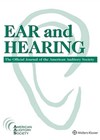
Journal Reviews
Are we now safe at work?
Fifty years is a long time, yet the years pass in a blink of an eye. Where are we in comparison to where we were then, in terms of the occupational protection from noise exposure and ototoxicity, other than being...
All present and correct
You have ear protection, but are you using it properly? What are the risks over time? The design of standard earplugs has changed a lot in a decade. Earplug attenuation did reduce over time but still remained safe, however the...
Ageing Ears
How do our ears show our age? We are all aware of the concept of presbycusis and a plethora of other events that impact our hearing over the passage of time. We are familiar with the standard subjective testing, though...
What type of sensitivity?
It is true that the different types of decreased sound tolerance conditions are, in general, poorly defined and the lines between them blurry. Hyperacusis? Loudness recruitment? Misophonia? Phonophobia? Sensory overload in noise? This paper aims to provide reference data for...
Vascular disease and sudden sensorineural hearing loss
Oussoren et al performed a systematic review and meta-analyses of current literature on the above topic: specifically, cardiovascular risk factors for developing idiopathic sudden sensorineural hearing loss (iSSNHL), the presence of white matter hyperintensities in patients with iSSNHL and the...
Use it or lose it…
The ageing auditory system: about 15 years ago, you could probably count on one hand the number of research papers on this subject. Now it seems one of the hot topics of discussion and investigation. This is, it seems, quite...
Higher risk and a tailored need
Historically, in audiology there is almost an unspoken understanding that when presented with a musician, a nuanced approach is likely to be required. Previous research has already shown there is a higher risk of noise exposure and accompanying signal distortion...
Newborn sensorineural hearing loss – what is the incidence?
In the last two decades, the introduction of newborn screening for hearing loss has dramatically lowered the average age of newborn hearing loss diagnosis to around two to three months of age. The benefits of early diagnosis are manifold, enabling...
How to increase uptake of hearing screening in primary care
Untreated hearing loss leads to an increased risk of dementia and depression. There is currently little evidence to support the benefits of hearing screening in asymptomatic older adults. The main aim of the study was to compare three hearing screening...
Are cardiovascular risk factors associated with hearing loss?
Cardiovascular disease (CVD) risk factors are associated with microvascular damage that can impair molecular transport across capillary walls and cause inflammation and oxidative stress that may damage cochlear structure and function. This study determined, among a population-based sample of Canadian...
Be mindful of exposure
This is a topic which has been highlighted before in the Hearing Research series, as the evidence base regarding the specific impact of acoustic trauma on the auditory system has been expanding regularly in the last few years. This particular...
Can tympanometry be used to diagnose Ménière’s disease?
The authors proposed multifrequency tympanometry (MFT) as an in-office test which may be able to diagnose Ménière’s disease (MD) that is quicker and more cost-effective than other methods. MFT measures the acoustic admittance of the middle ear and external ear...













